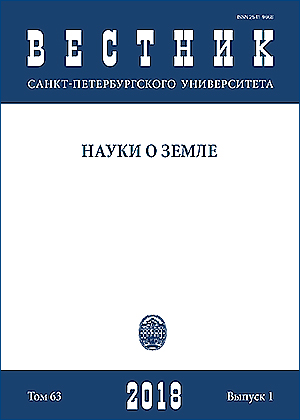Clinopyroxene from eudialyte lujavrites complex of the Lovozero alkaline massif (Kola Peninsula): Сharacteristics of the chemical composition and evolution
DOI:
https://doi.org/10.21638/11701/spbu07.2018.105Abstract
The Lovozero alkaline massif is the largest known alkaline layered intrusion (Semenov E. V. et al., 1974). For the first time this paper examines the evolution compositions of clinopyroxenes from the third intrusive phase introduced into the main magmatic stage (the complex of eudialyte Lujavrites). A gap has been filled in for a detailed study of pyroxene, as the main melanocratic rock-forming mineral of the massif. Petrographic features of clinopyroxenes in various associations among the main rocks of the complex (eudialyte lujavrites, foyaites and porphyry lujavrites) have been studied. The first approach that takes into account the variational diversity of zonal crystals of clinopyroxenes and their morphology. Zonality and morphology of crystals were studied in detail. The possible presence of Zr-johansenite and Ti—Zr-aegirine minals is shown. The general and particular trends in the evolution of the chemical composition corresponding to zonality are outlined. It was established that there is no direct connection between the chemical composition of clinopyroxenes (in terms of the content Ti—Zr-egirin and Zr-johansenite minals in them) with the stratigraphic rock level. It has been established that rocks of similar clinopyroxenes are grouped in the same location at different depths. For the first time, the highest content of ZrO2 (3.09 wt. %) was detected in the rocks of the eudialyte lujavrita complex, despite the fact that in these rocks is present eudialyte as widely distributed the zirconium phase and a possible scheme for the enrichment of rocks by this element is proposed.
Keywords:
pyroxenes, eudialyte lujavrites, Lovozero massif, zirconium
Downloads
References
References
Downloads
Published
How to Cite
Issue
Section
License
Articles of "Vestnik of Saint Petersburg University. Earth Sciences" are open access distributed under the terms of the License Agreement with Saint Petersburg State University, which permits to the authors unrestricted distribution and self-archiving free of charge.






